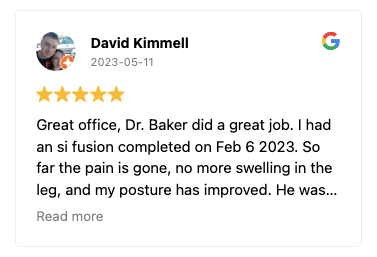Minimally Invasive Sacroiliac Joint Fusion
The diagnosis of SI joint dysfunction requires an extensive patient history and comprehensive physical examination.
The sacroiliac joint is positioned in the pelvis and plays a vital role in shock absorption and preventing impact forces from reaching the spine. The exact reasons for sacroiliac joint pain are still unknown, but various factors lead to this joint pain, including trauma and injury. The other causes of this sacroiliac joint pain could be the following:
- Arthritis
- Loosening of tissues due to pregnancy
- Any lower back surgery
- Post-partum
- Systemic inflammatory conditions
- Infections in the joint
So, if you have a sacroiliac joint dysfunction or inflammation, you need minimally invasive sacroiliac joint fusion surgery to ease your joint pain and encourage your bone growth.
Minimally invasive surgery is preferred in this case because it does less damage and pain to the body with fewer complications and shorter hospital stays.
Request an Appointment
Frequently Asked Questions about
Sacrioliac Joint Fusion Surgery
How Is Minimally Invasive Sacroiliac Joint Fusion Surgery Done?
A minimally invasive procedure is the most common and safest for joint fixation. It is done by a small incision in the buttock region. Doctors nowadays avoid open sacroiliac joint fusion. Because it requires an extensive period of healing and also includes more complications than minimally invasive procedures.
This advanced and highly beneficial surgery for joint fusion is done through the following procedure.
- General anesthesia is given to the patients before starting the surgery.
- During surgery, your surgeon will create a small incision ranging from 2-3cm using x-rays in the buttock sides. For access to the ilium, gluteal muscles are dissected.
- A small guide pin creates a small hole that allows access to the ilium. This opening is further broached to the sacrum for implantation.
- The surgeon placed bone grafts for bone grafting after clearing soft tissues and cartilage from the targeted area.
- By using the passage created in the ilium, implant instruments are guided and placed with screws and pins.
- The incision site is cleaned with saline solution to remove germs and debris. Then using standard sutures, the incision site is closed.
You can visit Dr. Abdul Baker for joint fusion and minimally invasive spine surgeries.
What are the Benefits of Minimally Invasive Sacroiliac Joint Fusion surgery?
Why see Dr. Baker for Minimally Invasive Sacrioliac Joint Fusion Surgery?


Dr. Baker specializes in neurosurgery, neurosurgical spine surgery, neurotrauma, brain tumors, spinal tumors, and peripheral nerve damage treatment.









